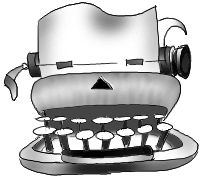ROB HOFFMAN
"They really like me!"
"They really like me!"


Editorial
(By Michael Gartner, 1997 Pulitzer winner for Editorial Writing)
Wednesday, January 20, 1999
Today is Rob Hoffman's last day as a reporter for the Tribune.
After 3 1/2 years covering city government, he's heading to Ann Arbor, Mich., to cover city government there.
That news is hardly worth an editorial – we usually send off reporters with just a cake, some grief and our best wishes – but Hoffman truly made a difference in this town. Because of him, life is a little better, and a lot quieter, for hundreds of residents.
So we thought we'd take a few minutes today to tell the story. It's a story of how a reporter's tenacity and curiosity led to change in a town, and it's a story of how newspapers work.
It all started on July 23, 1997, when Tribune columnist Craig Textor wrote about train whistles drowning out the speeches at the dedication of the Youth and Shelter Services headquarters at Fifth and Kellogg. Textor, whose columns have never expressed a fondness for the Union Pacific Railroad, wrote, "We wish the insistent, shrieking whistles would be replaced by lonesome whistles wafting in from out of town …"
That prompted lots of folks to write letters to the editor complaining about the whistles, which were becoming increasingly bothersome as the Union Pacific added trains on this, its main east-west route. (No one seems sure how many trains go through Ames on an average day; the number ranges from 60 to 80 and it is increasing) Things are getting out of hand, letter writers and others said. The whistles, 400 to 500 a day when you calculate in the seven Ames crossings on the main line, seem louder and louder, neighbors said.
That prompted Tribune intern Chris Miller – now in law school in Ohio – and reporter Hoffman to wonder just how loud train whistles have to be. Both contacted the Federal Railway Agency and texts and experts for facts and figures. On Sept. 8, 1997, Miller wrote a lovely editorial explaining the perils of Ames' railroad crossings and the railroad whistles. He noted that the law required train whistles to be 95 decibels, and he quoted a Union Pacific official as saying the whistles sometimes hit 120 decibels. And Miller added:
"By comparison, a jet roars off at 140 decibels. A rock concert blasts at 125 decibels. A jackhammer rattles at 100 decibels. A vacuum hums at 70 decibels. A fraternity party draws an Ames noise ordinance citation at 60 decibels. A student in the library whispers at 40 decibels. And leaves rustle at 20 decibels."
It concluded: "As an evil, train whistles are necessary. As a city, Ames should get used to them."
But Hoffman was discovering at about the same time that as an evil, train whistles weren't necessarily necessary. The City Council arranged a ride through town on a UP train, and Hoffman went along. He was intrigued by two statements: A UP spokesman denied the whistles ever approached 120 decibels, and another UP person mentioned in an aside that some towns, including Gering, Neb., were trying new solutions.
There was some confusion in the newsroom about decibels – the perceived volume of noise doubles with every 10 decibels, we ultimately determined – so Hoffman called audiologist Paul Brueggeman to learn some more. Brueggeman decided out of curiosity to take some readings, and he later told Hoffman that the readings were quite high. Hoffman then went with him to conduct the tests under more precise conditions, measuring the decibel level from precisely 100 feet from the trains, as federal regulators require.
Meanwhile, Hoffman started calling people in Gering, Neb. – the newspaper, council members, the mayor – to find about the much-quieter, on-site horns used at railroad crossings there. he also found the inventor, Merrill Anderson of Omaha, and talked to him. Finally, he talked to a center in Massachusetts that had studied the effectiveness of the horns.
On Nov. 16, he wrote two stories. One, based on Brueggeman's readings, disclosed how excessively loud the whistles were – at 112 decibels, more than twice as loud as the federal minimum. The other told of the automatic horns that had made life so much quieter in Gering.
The Ames City Council got even more interested. Council members studied the issue, set aside $90,000 to buy three of the horns, and sent traffic engineer Scott Logan to look at the horns in Parsons, Kan., the only other town that had installed them. He reported back favorably, the council formally voted to buy them and on Oct. 15 of 1998, 15 months after Textor wrote his column, Ames officials cut the ribbon at a ceremony installing the new horns.
A new survey, which Hoffman wrote about yesterday, shows Ames residents love the change. "Our area has again become very nice," said a person on Brookridge. Added another respondent: "We can think of nothing in 18 years of (living here) that has so much improved our quality of life."
So that's the story of a story.
Reporters aren't supposed to set out to change the world. They're supposed to explore it or explain it or expose it.
But sometimes the exploring or the explaining or the exposing leads to change, and sometimes that change is for the better.
That's what happened when Rob Hoffman began exploring the strange world of train whistles.
And that's why he leaves Ames a little better – and a lot quieter – than he found it.
What others say